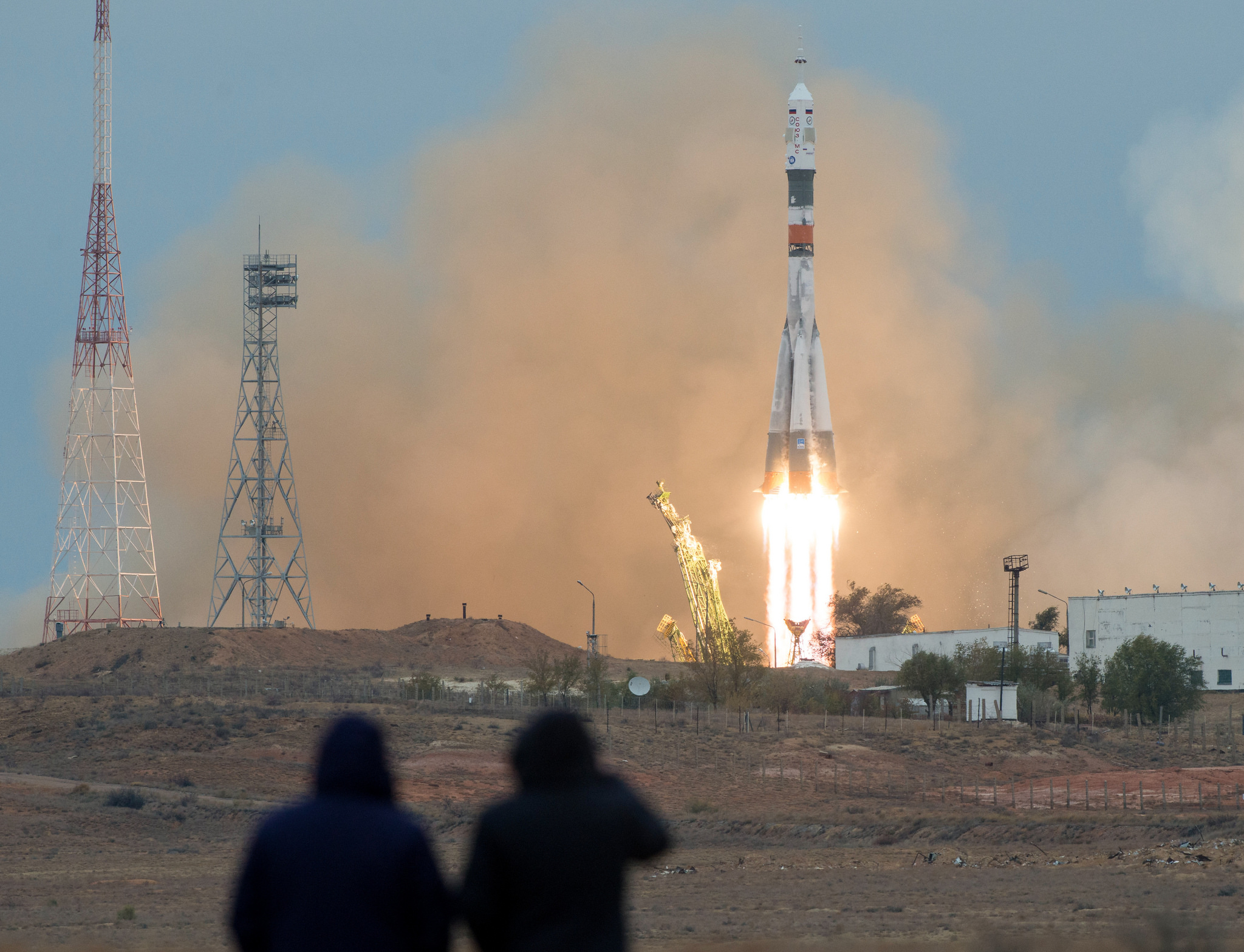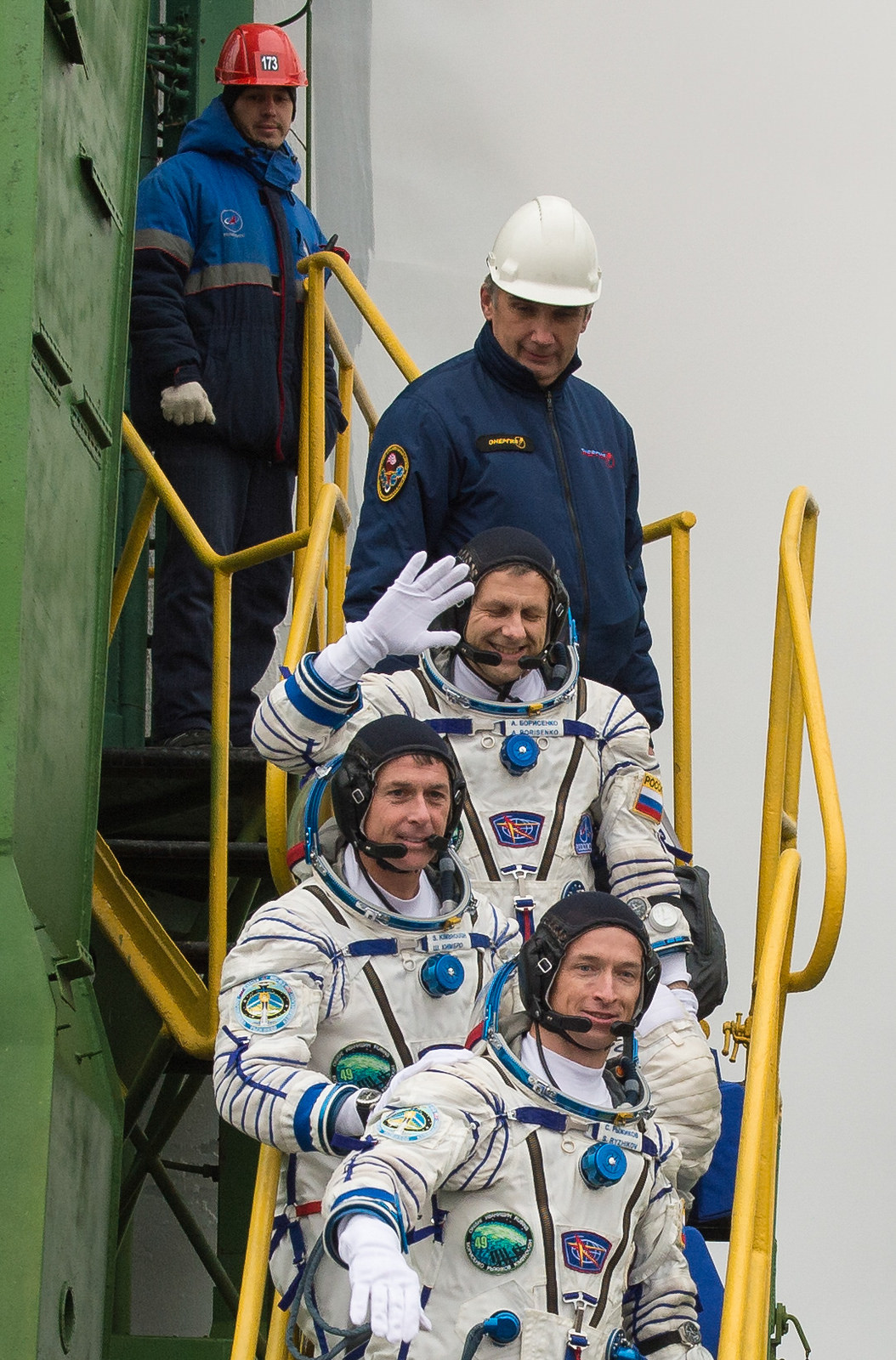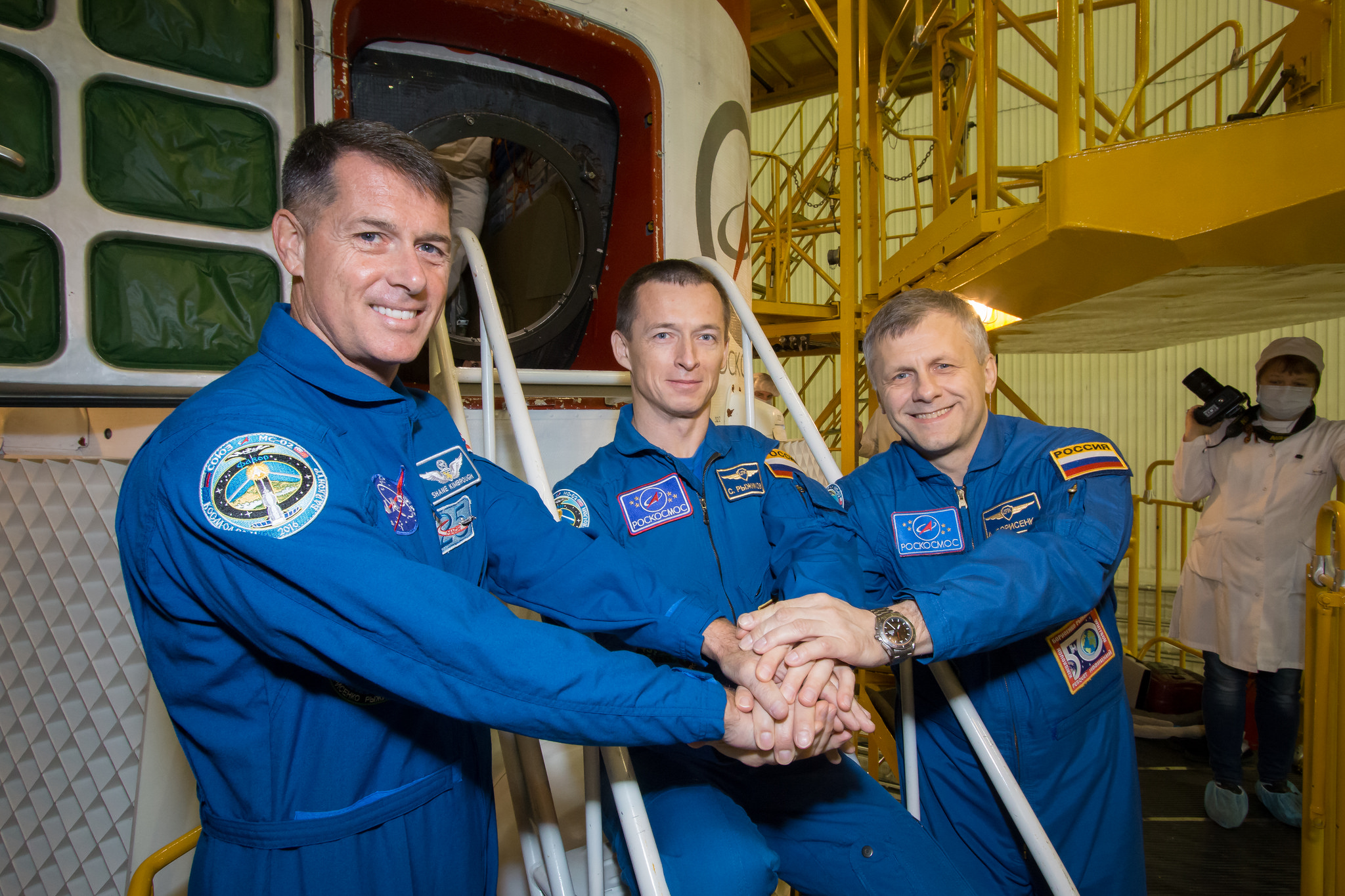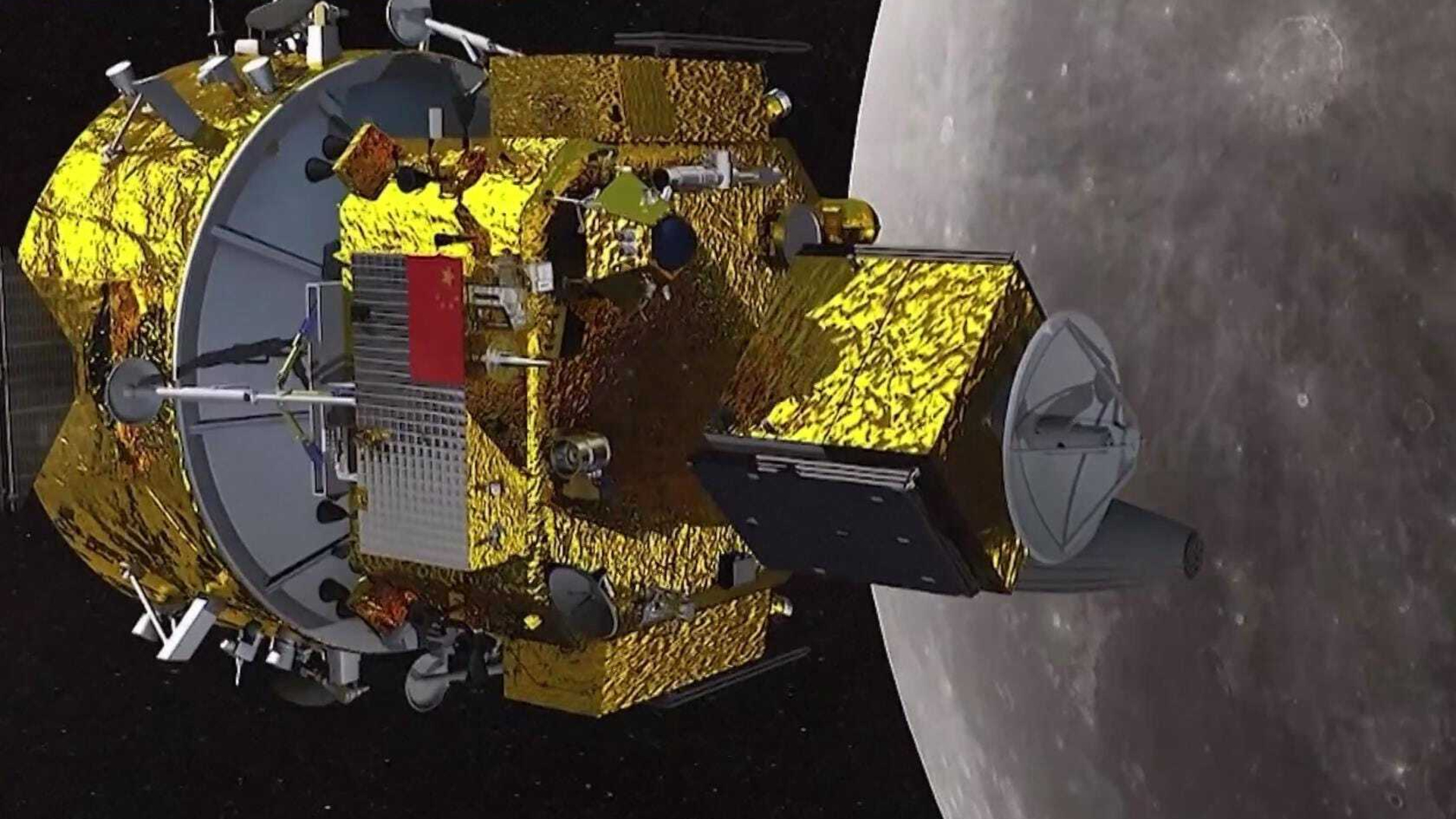Liftoff! Soyuz Rocket Launches US-Russian Space Station Crew Into Orbit

A Russian Soyuz rocket launched an American astronaut and two Russian cosmonauts into orbit this morning, beginning a two-day journey to the International Space Station.
At 4:05 a.m. EDT (0805 GMT) today (Oct. 19), the trio lifted off from the Baikonur Cosmodrome in Kazakhstan, riding on a Russian Soyuz MS-02 spacecraft — the second upgraded Soyuz spacecraft to carry new crewmembers to the space station (the first launched in July).
The new crew consists of NASA astronaut Shane Kimbrough, who will serve as a flight engineer for Expedition 49 on the station and commander of Expedition 50, as well as Russian cosmonauts Sergey Ryzhikov, who will command the Soyuz spacecraft, and Andrey Borisenko. [Launch Photos: Soyuz Rocket Lofts Expedition 49 Crew Into Space ]
After launching, the crew will change out of their launch suits into more comfortable clothing for two days of tests on the upgraded Soyuz spacecraft, Kimbrough said in a news conference in July. (They'll change back into their suits when they arrive.) The craft will orbit Earth 34 times as it catches up with the space station, finally making contact and docking on Friday, Oct. 21 at 5:59 a.m. EDT (0959 GMT). The hatches between the spacecraft and station will open at around 8:35 a.m. EDT (1235 GMT) and the crew will be greeted by the current three-person crew. That whole process will be webcast live on Space.com, courtesy of NASA TV.
This mission is Kimbrough's second; he first flew on the space shuttle on a space station construction mission in 2008. While in orbit, the astronauts expanded the space station to enable it to house six crewmembers rather than three.
Borisenko will be making his second visit to the International Space Station as well. He commanded the station during 2011's Expedition 28; before that, he worked in Mission Control for the Russian space agency, Roscosmos, for years and acted as a flight director for the space station Mir as well as the International Space Station.
This launch is Ryzhikov's first spaceflight, although he is an experienced air force pilot. Microgravity will be a new experience for him, the crew revealed during the news conference.
Breaking space news, the latest updates on rocket launches, skywatching events and more!
"It will be neat watching Sergey, for the first time, learning how to fly, and Andrey and I could be laughing at him," Kimbrough joked. "Nah, it will take us a few days to get back into flying mode as well," he added.
The new arrivals will join NASA astronaut Kate Rubins, Japanese astronaut Takuya Onishi and Russian cosmonaut Anatoly Ivanishin, who have been alone on the station since Sept. 6. Their stay has been longer than expected: This mission was originally scheduled to launch Sept. 23, and the other three crewmembers would have returned in October; the Soyuz launch was delayed for technical reasons just a few days before the original date.
While there, the crew will welcome aboard supply spacecraft, including a Japanese H-II Transfer Vehicle that was originally scheduled for Sept. 30, and will continue the station's ongoing research into how physics, chemistry, biology and human physiology function in microgravity. (Several experiments for the station's U.S. segment launched on Orbital ATK's Antares rocket last week.) The cosmonauts have their own set of experiments, as well.
"The entire spaceflight is like one big experiment; not just ours, but everyone's," Ryzhikov said at the news conference, using a translator. "[It] has many parts: For example, we are testing new technology, there is a scientific component, we'll do experiments on the mice that will fly along with us, and the crew itself is kind of like a lab rat."
Email Sarah Lewin at slewin@space.com or follow her @SarahExplains. Follow us @Spacedotcom, Facebook and Google+. Original article on Space.com.

Sarah Lewin started writing for Space.com in June of 2015 as a Staff Writer and became Associate Editor in 2019 . Her work has been featured by Scientific American, IEEE Spectrum, Quanta Magazine, Wired, The Scientist, Science Friday and WGBH's Inside NOVA. Sarah has an MA from NYU's Science, Health and Environmental Reporting Program and an AB in mathematics from Brown University. When not writing, reading or thinking about space, Sarah enjoys musical theatre and mathematical papercraft. She is currently Assistant News Editor at Scientific American. You can follow her on Twitter @SarahExplains.


